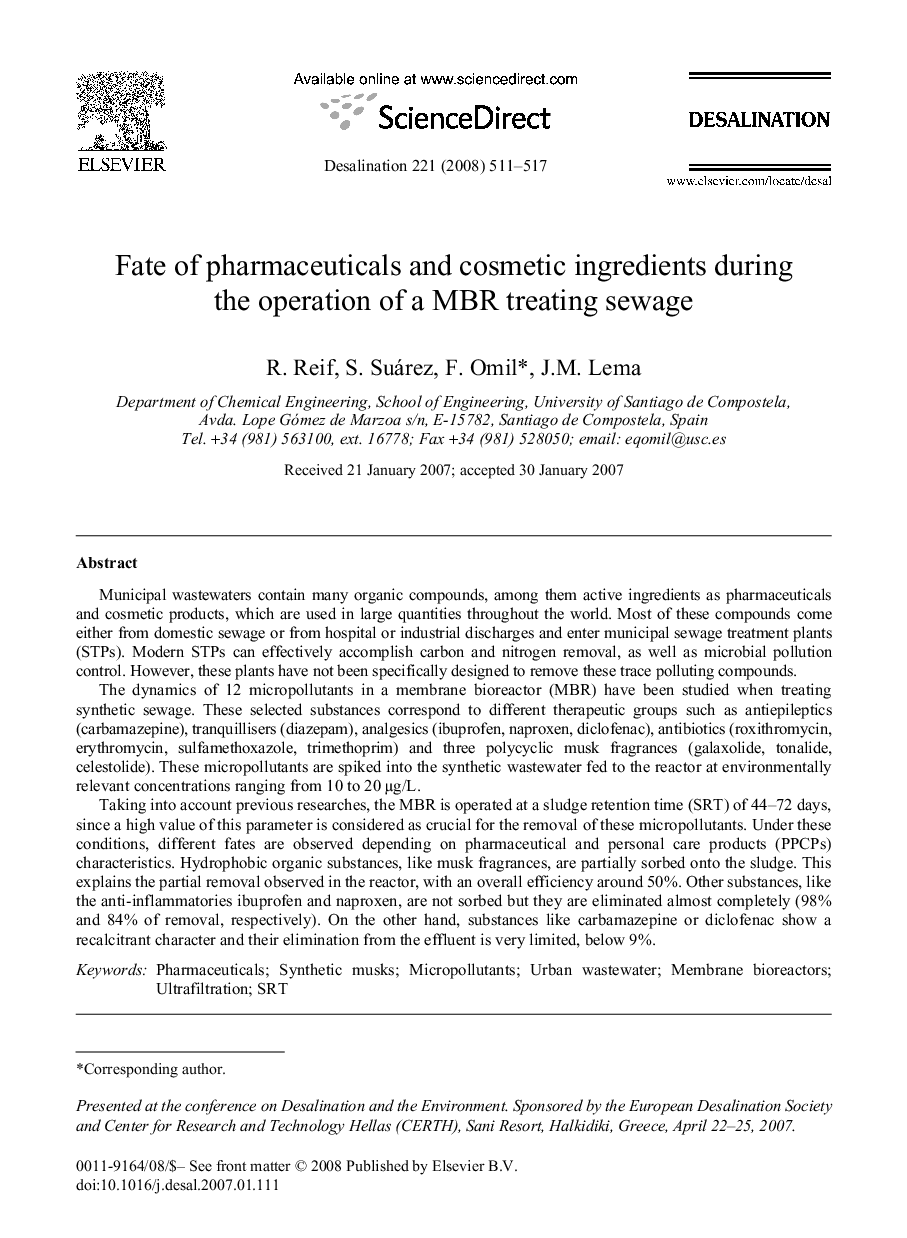| کد مقاله | کد نشریه | سال انتشار | مقاله انگلیسی | نسخه تمام متن |
|---|---|---|---|---|
| 627663 | 1455469 | 2008 | 7 صفحه PDF | دانلود رایگان |

Municipal wastewaters contain many organic compounds, among them active ingredients as pharmaceuticals and cosmetic products, which are used in large quantities throughout the world. Most of these compounds come either from domestic sewage or from hospital or industrial discharges and enter municipal sewage treatment plants (STPs). Modern STPs can effectively accomplish carbon and nitrogen removal, as well as microbial pollution control. However, these plants have not been specifically designed to remove these trace polluting compounds.The dynamics of 12 micropollutants in a membrane bioreactor (MBR) have been studied when treating synthetic sewage. These selected substances correspond to different therapeutic groups such as antiepileptics (carbamazepine), tranquillisers (diazepam), analgesics (ibuprofen, naproxen, diclofenac), antibiotics (roxithromycin, erythromycin, sulfamethoxazole, trimethoprim) and three polycyclic musk fragrances (galaxolide, tonalide, celestolide). These micropollutants are spiked into the synthetic wastewater fed to the reactor at environmentally relevant concentrations ranging from 10 to 20 μg/L.Taking into account previous researches, the MBR is operated at a sludge retention time (SRT) of 44–72 days, since a high value of this parameter is considered as crucial for the removal of these micropollutants. Under these conditions, different fates are observed depending on pharmaceutical and personal care products (PPCPs) characteristics. Hydrophobic organic substances, like musk fragrances, are partially sorbed onto the sludge. This explains the partial removal observed in the reactor, with an overall efficiency around 50%. Other substances, like the anti-inflammatories ibuprofen and naproxen, are not sorbed but they are eliminated almost completely (98% and 84% of removal, respectively). On the other hand, substances like carbamazepine or diclofenac show a recalcitrant character and their elimination from the effluent is very limited, below 9%.
Journal: Desalination - Volume 221, Issues 1–3, 1 March 2008, Pages 511-517